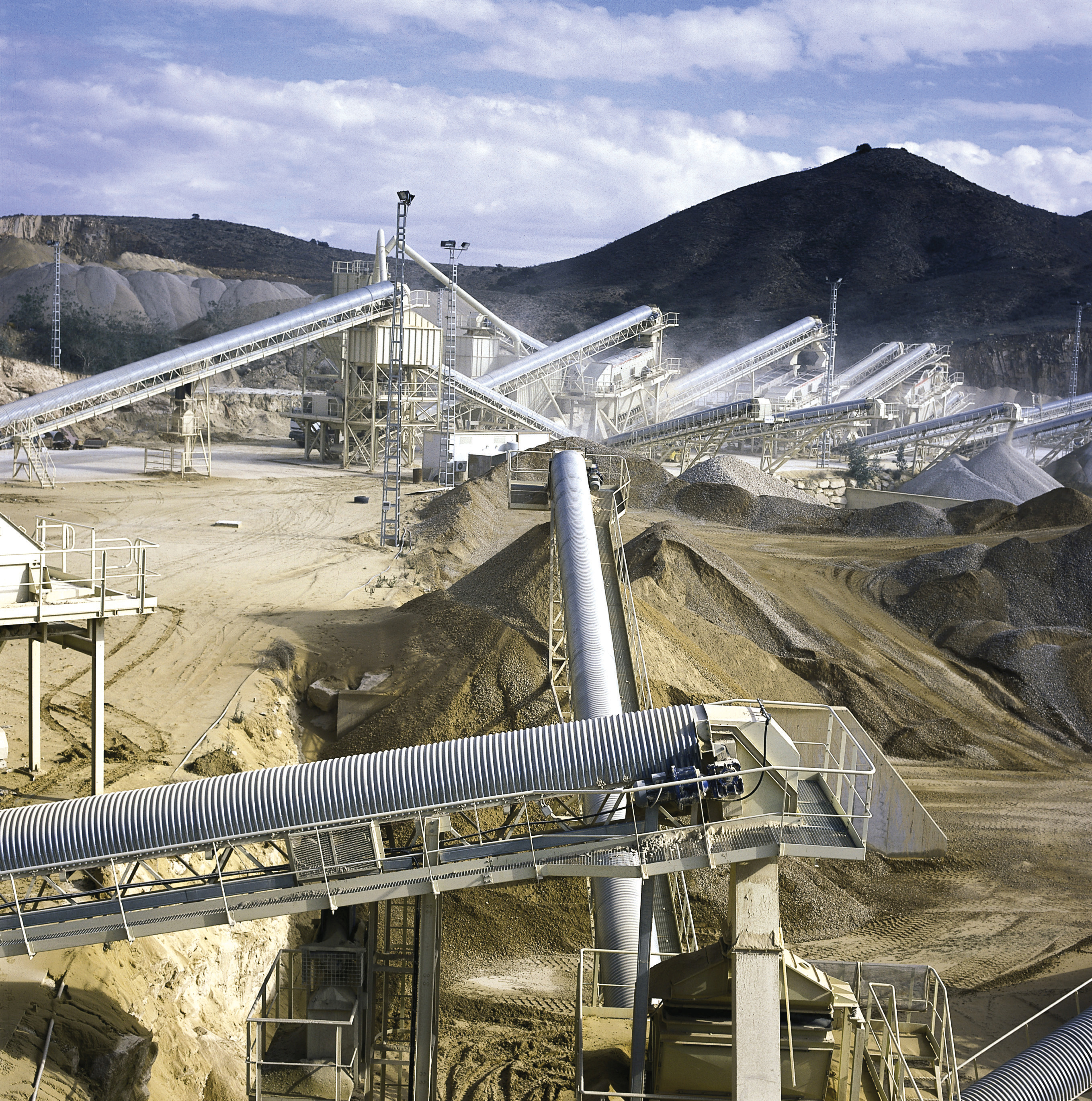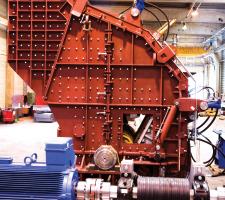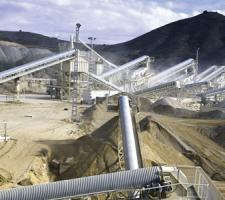
Mobile crushing plants offer many benefits but their stationary counterparts also have some heavyweight solutions
Mobile crushing equipment has become increasingly popular in recent years, offering quarry owners a tremendous amount of flexibility.
Development of the market for wheel and track-mounted crushers has been rapid, and in some countries estimates put it as high as 65-70% of the crushing aggregate market.
Being mobile, compact and self-driven allows the tracked units to operate close to the quarry site, often reducing the use of large conveyors belts and the number of dump trucks required to haul material, which in turn offsets recurring operating maintenance costs. Such equipment can also be commissioned and dismantled in a day or days, keeping residual losses at bare minimum, as compared to a static plant.
However, static plant continue to enjoy a special position in the industry, and fixed crushing and screening plants are said to possess an edge for the ability to operate in high output quarries that are typically designed for a useful life of 20 or more years.
For example, if a plant has a throughput of over 500tonnes/hr, large fixed crushers and screens are likely to be the best option, offering more flexible production of different grades of aggregates, and being built to specific flow designs matched to the users' crushing tasks they are adaptable to tuning up with little changes to produce from coarse to fine aggregates to crushed sand.
However, large plants are likely to require heavy foundations and the set up times can be counted in weeks rather than days, although they are often provided with surge piles/surge bins to regulate the feed to secondary and tertiary crushers, which increases the crushing performance.
Being ideal for long duration crushing at a single point and to produce varied products, fixed plants can be closely controlled for quality products and can be operated at optimum efficiency for a good output.
Indeed, there are a number of process simulation products available to improve the efficiency of an existing crushing plant including Plant Designer (
According to
"A feature that all stationary plants have in common is that several crushing and screening units cooperate, forming an integrated system," said the company.
"In materials processing, the quality of an end product is determined, among other things, by the number of crushing stages and by sufficiently dimensioned screening equipment. A basic distinction is made between pre-screening, which is important for separating the material streams prior to crushing, and grading, which separates the different final aggregate fractions." Screening using geometrical patterns is the most common method of size control in aggregates processing and various types and sizes are produced by all the major crushing equipment manufacturers including
Metso, which recently introduced a series of new crushers, points out "that all crushers have a limited reduction ratio" meaning that size reduction will take place in stages: the number of stages is guided by the size of the feed and the requested product.
For example, in primary crushing there is a selection of crushers: a horizontal impactor, usually used for soft material, while for harder feed there is a choice between a gyratory or jaw crusher.
"In a rock crushing circuit, the second stage normally starts to be of importance for control of size and shape. Because of this the cone crusher is used more frequently. Compared to other crushers the cone crusher has some advantages making it suitable for size reduction and shaping downstream in a crushing circuit. For many rock and gravel crushing circuits the final crushing stage is of special interest. The final sizing and shaping will take place in this stage influencing the value of the final product," said Metso.
Telsmith's new Hydra-Jaw model H2550 jaw crusher (highlighted at the World of Asphalt) incorporates a special hydraulic toggle providing hydraulic push button adjustment controls, tramp iron relief and chamber clearing functions, allowing the operator to adjust the crusher setting in moments.
"By maintaining the proper setting, feed to the secondary crusher is controlled, allowing optimum total plant production over the course of the year," said the company.
Terex is also expanding its options for static crushing plants with the launch of the Canica 2000 vertical shaft impactor and the Cedarapids Rollercone MVP450X cone crusher, which offers quick crusher setting adjustment under load. The new Canica model offers throughputs of up to 250tonnes per hour with a 100mm feed size and a range of anvil options.
Using the latest in design and modelling software, Metso's new Superior 60-110E primary gyratory crusher is said to offer benefits that include a 20% reduction in weight but with no reduction in capacity; an increase from 514rpm up to 600rpm; the option of being retrofitted, and reduced installation and transportation costs. The new Nordberg MP 1250 cone crusher claims up to 30% increase in capacity as a result of advanced crushing dynamics.















